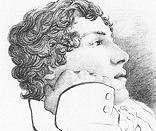The Composition of "To Autumn"
Keats wrote "To Autumn" after enjoying a lovely autumn day; he described his experience in a letter to his friend Reynolds:
"How beautiful the season is now--How fine the air. A temperate sharpness about it. Really, without joking, chaste weather--Dian skies--I never lik'd stubble fields so much as now--Aye better than the chilly green of the spring. Somehow a stubble plain looks warm--in the same way that some pictures look warm--this struck me so much in my Sunday's walk that I composed upon it."
General Comments
This ode is a favorite with critics and poetry lovers alike. Harold Bloom calls it "one of the subtlest and most beautiful of all Keats's odes, and as close to perfect as any shorter poem in the English Language." Allen Tate agrees that it "is a very nearly perfect piece of style"; however, he goes on to say, "it has little to say."
This ode deals with the some of the concerns presented in his other odes, but there are also significant differences. (1) There is no visionary dreamer or attempted flight from reality in this poem; in fact, there is no narrative voice or persona at all. The poem is grounded in the real world; the vivid, concrete imagery immerses the reader in the sights, feel, and sounds of autumn and its progression. (2) With its depiction of the progression of autumn, the poem is an unqualified celebration of process. (I am using the words process, flux, and change interchangeably in my discussion of Keats's poems.) Keats totally accepts the natural world, with its mixture of ripening, fulfillment, dying, and death. Each stanza integrates suggestions of its opposite or its predecessors, for they are inherent in autumn also.
Because this ode describes the process of...


